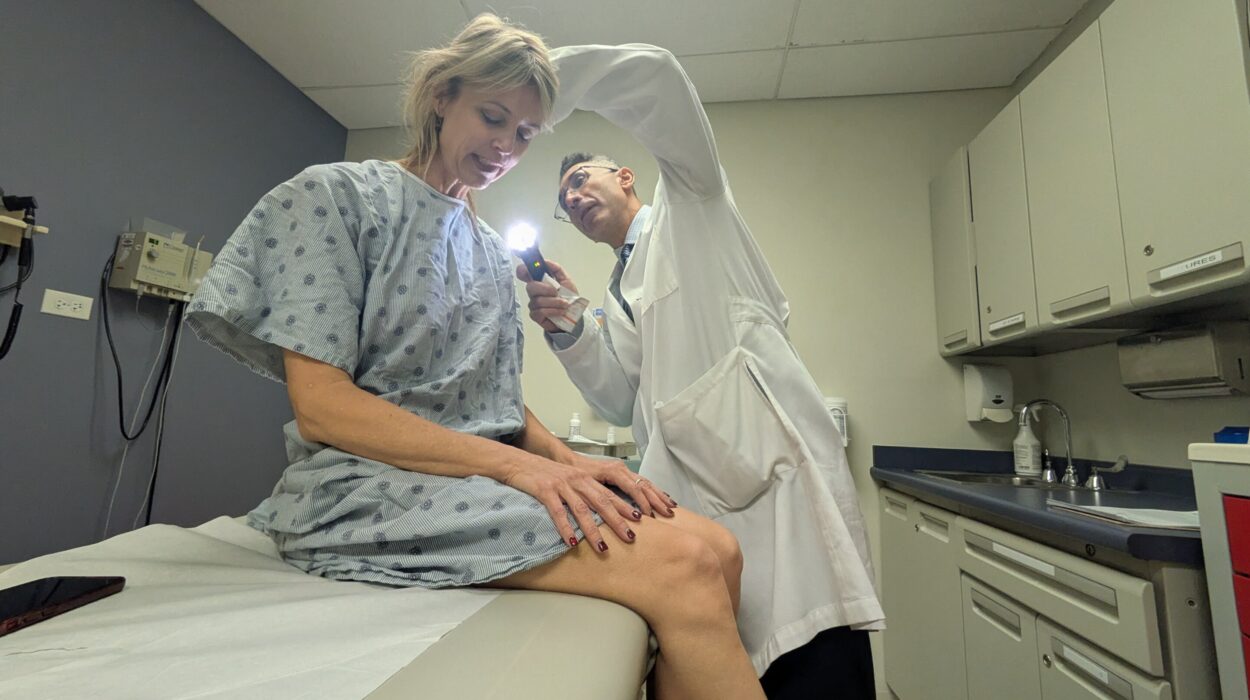There is an invisible war waging inside the bodies of millions, a relentless battle where the immune system turns against its own host. Autoimmune diseases, the enigmatic disorders in which the body’s defense system mistakenly attacks healthy cells, tissues, and organs, are a growing concern in modern medicine. But what is even more remarkable—and troubling—is that these diseases do not distribute themselves evenly. Women are the primary victims. Whether it is lupus, multiple sclerosis, rheumatoid arthritis, Hashimoto’s thyroiditis, or scleroderma, women are far more likely to develop these conditions than men. In many cases, the disparity is overwhelming. Some autoimmune diseases affect women at rates as high as nine to one compared to men.
The statistics are clear, but the reasons behind them are not. Why does the female immune system appear more prone to such misfires? What role do hormones, genetics, reproductive factors, and even societal influences play in this disproportion? Understanding the intricate and often overlooked relationship between autoimmune disease and women’s health is not only essential for improving lives but for unraveling some of the deepest mysteries of human biology.
The Paradox of a Strong Immune System
At first glance, one might think that a more powerful immune system would offer an advantage. Indeed, research suggests that women have a stronger immune response than men. This evolutionary advantage may have developed to better protect both mother and child from infectious diseases during pregnancy and child-rearing. But with that heightened vigilance comes a double-edged sword: a greater risk of the immune system becoming overzealous and mistaking the body’s own tissues for foreign invaders.
This paradoxical strength may be a key reason why women dominate the autoimmune disease landscape. A robust immune system may be more prone to hypersensitivity, especially when exposed to certain environmental triggers or internal shifts such as those brought on by hormonal changes. Instead of simply fighting off viruses or bacteria, the female immune system may be more likely to overreact, initiating inflammatory processes that result in chronic illness.
Hormones: The Silent Influencers
The complex dance of hormones that orchestrates the female reproductive cycle is also deeply intertwined with the immune system. Estrogen, progesterone, and other sex hormones are not merely responsible for menstruation and fertility. They exert powerful influences on immune cells, modulating how aggressively or passively the immune system responds to perceived threats.
Estrogen, in particular, is thought to enhance immune response. While this can be beneficial in warding off infections, it may also increase the likelihood of an autoimmune flare. Intriguingly, many autoimmune diseases tend to flare or emerge during times of hormonal transition. Puberty, pregnancy, postpartum periods, and menopause are all common windows for the onset or worsening of autoimmune symptoms. Each of these stages involves substantial hormonal upheaval, which in turn can disrupt the delicate balance of immune regulation.
Pregnancy presents an especially fascinating scenario. During pregnancy, the immune system adapts to allow tolerance for the developing fetus—an entity that is genetically half-foreign. Many women with autoimmune diseases experience remission during pregnancy, only to suffer intense flare-ups shortly after childbirth when the immune system rebounds to its pre-pregnancy state. The immune suppression required to sustain a pregnancy appears to temporarily calm autoimmune activity, but this tranquility is often fleeting.
Genetics and the X Factor
Another element in the autoimmune puzzle is rooted in the chromosomes themselves. Women have two X chromosomes, while men have one X and one Y. This genetic distinction could be contributing to the higher rates of autoimmune disease in women. The X chromosome contains numerous genes involved in immune function, and having two X chromosomes may lead to a kind of gene dosage effect. In other words, some of the genes that regulate immunity might be expressed more strongly or aberrantly in women.
Additionally, one of the X chromosomes in women is normally inactivated in each cell to prevent overexpression of X-linked genes. However, this process of X inactivation is not always perfect. In some cases, a subset of cells may express genes from both X chromosomes, a phenomenon known as “escape from X inactivation.” If these genes are involved in immune system regulation, their double expression could increase the likelihood of autoimmune reactivity.
Family histories also reveal a strong hereditary component to many autoimmune conditions. While having a relative with an autoimmune disease doesn’t guarantee the same diagnosis, it does increase the risk. Interestingly, the types of autoimmune diseases that run in families may vary, suggesting that genetic predisposition is not disease-specific but rather reflects a general vulnerability to immune dysregulation.
Environmental Triggers Meet Internal Susceptibility
While genes and hormones lay the groundwork, they do not act in isolation. Environmental exposures are believed to be crucial triggers that interact with an individual’s genetic and hormonal profile to initiate autoimmune diseases. Infections, diet, toxins, UV radiation, and even stress are all potential contributors. For women, these external stimuli may be particularly potent due to the underlying biological vulnerabilities discussed earlier.
Certain autoimmune diseases like lupus are notably sensitive to sunlight, and women may be more likely to experience flare-ups during high sun exposure. Likewise, dietary patterns, particularly those involving processed foods and high sugar content, may promote systemic inflammation and affect the gut microbiome, another major player in immunity. The gut is increasingly recognized as a critical battleground in autoimmune regulation, and imbalances in gut flora may contribute to the onset and progression of these conditions.
Moreover, societal pressures and lifestyle expectations often place women under immense psychological stress. Chronic stress can disrupt hormonal balance, weaken the immune system’s regulatory functions, and act as a flare trigger. The connection between emotional stress and autoimmune flare-ups is well-documented, and in many cases, a significant life stressor precedes disease onset.
Invisible Illness and Gendered Experiences
Beyond the biological factors, the way autoimmune diseases are experienced and addressed by the medical community is deeply intertwined with gender. Many autoimmune diseases are “invisible illnesses”—conditions where the symptoms, though severe, are not outwardly apparent. Fatigue, brain fog, chronic pain, and mood disturbances are common symptoms, yet they are often dismissed or misunderstood, particularly when expressed by women.
Historically, women’s health complaints have been downplayed or misattributed to psychological causes. This has led to delays in diagnosis and treatment for countless women with autoimmune diseases. The average time from symptom onset to diagnosis for many autoimmune conditions can span years, during which patients may feel invalidated, stigmatized, or blamed for their illness.
The medical system, for all its advancements, still carries implicit biases. Women are more likely to be told that their symptoms are “in their head,” or attributed to anxiety or depression, before being taken seriously as potential autoimmune cases. The emotional toll of such invalidation only compounds the physical burden, creating a vicious cycle that can deepen illness and delay recovery.
The Impact on Reproductive Health
Autoimmune diseases don’t just coexist with reproductive health—they actively shape it. Some autoimmune conditions can interfere with menstruation, fertility, and pregnancy. Lupus and antiphospholipid syndrome, for instance, are associated with a higher risk of miscarriage, preeclampsia, and other pregnancy complications. Polycystic ovary syndrome (PCOS), while not always categorized as autoimmune, shares inflammatory features and is often seen alongside autoimmune thyroid disorders.
Fertility treatment and pregnancy planning can be more complicated for women with autoimmune diseases. Certain medications used to control autoimmune conditions may not be safe during pregnancy, requiring careful management and sometimes temporary cessation of treatment. In other cases, the disease itself may interfere with the ability to conceive or carry a pregnancy to term.
Pregnancy, in turn, can influence the course of autoimmune disease. As mentioned earlier, some women experience remission during pregnancy, while others may face exacerbated symptoms. The postpartum period, when hormone levels crash and immune activity rebounds, is particularly risky. New mothers may find themselves overwhelmed not only by the demands of a newborn but by a resurgence of painful and debilitating symptoms.
Autoimmune Thyroid Disease and the Female Connection
Among the many autoimmune diseases, those that target the thyroid gland are among the most common, and they overwhelmingly affect women. Hashimoto’s thyroiditis and Graves’ disease represent two ends of the spectrum—underactive and overactive thyroid function, respectively. Both are driven by autoimmune activity and both have profound effects on mood, metabolism, energy, and reproductive health.
Thyroid hormones are essential regulators of the body’s metabolic rate, and when these hormones are disrupted, the effects ripple across every system. For women, thyroid dysfunction can lead to menstrual irregularities, infertility, weight fluctuations, and even increased risk of miscarriage. Unfortunately, these symptoms are often subtle and attributed to other causes, further delaying diagnosis.
Because the symptoms of thyroid disease overlap with common experiences in women’s lives—such as postpartum fatigue or menopausal changes—they are sometimes overlooked. Yet proper management of autoimmune thyroid conditions can dramatically improve quality of life and protect against long-term complications.
Navigating Treatment: Complex Choices for Women
Treatment for autoimmune diseases is rarely a one-size-fits-all journey, and for women, the process often involves additional layers of complexity. Hormonal fluctuations, pregnancy plans, and risk factors for osteoporosis and cardiovascular disease all influence treatment decisions.
Many standard treatments involve immune suppression, which reduces the body’s ability to fight infection and may interfere with reproductive health. Medications like methotrexate, for example, are effective for controlling inflammation but can cause birth defects and must be discontinued well in advance of pregnancy attempts. Similarly, corticosteroids can manage flares but may contribute to bone loss—a concern especially relevant to women who are already at higher risk of osteoporosis.
Women must often weigh the risks and benefits of treatment not just for themselves, but for their future families. This calls for a nuanced approach, one that integrates rheumatology, endocrinology, gynecology, and sometimes mental health care into a cohesive treatment plan.
Empowerment Through Education and Advocacy
One of the most powerful tools in managing autoimmune disease is knowledge. When women understand the nature of their illness and how it intersects with their health as a whole, they become better equipped to advocate for themselves. Self-advocacy is essential in a medical landscape where autoimmune diseases are often misunderstood and where women’s symptoms are too easily minimized.
Support groups, educational workshops, and patient-led initiatives have played a transformative role in reshaping the narrative around autoimmune disease. By sharing their stories, women are not only raising awareness but pushing for more research, better treatments, and a more inclusive understanding of health.
Advocacy is also changing the way medicine is practiced. Medical schools are increasingly including autoimmune diseases in their curricula, and more research is being dedicated to understanding sex-based differences in immune response. The growing recognition that “women’s health” extends far beyond reproductive issues is a welcome shift—and one that holds promise for future generations.
Hope on the Horizon
Although autoimmune diseases remain complex and incurable for now, the future offers reason for hope. Advances in immunology, genetics, and biotechnology are opening new frontiers in diagnosis and treatment. Biologic therapies, which target specific parts of the immune system, are already transforming lives. Precision medicine—tailoring treatment to an individual’s genetic and biological profile—promises even greater improvements in disease management.
Meanwhile, research into the role of hormones, gut health, and environmental triggers continues to shed light on the mechanisms behind autoimmunity. As our understanding deepens, so too does the potential for early detection, prevention, and eventually, cures.
But perhaps the greatest change is cultural. As more women speak out about their experiences, autoimmune diseases are moving from the shadows into the light. No longer dismissed as “mystery illnesses” or psychosomatic complaints, these conditions are gaining the respect and urgency they deserve. And with that recognition comes a renewed commitment to addressing not just the diseases themselves, but the gendered health disparities that have long accompanied them.






